Lhuentse Dzong Is The Chronicle Of Bhutan’s Spiritual Legacy To Witness In 2026
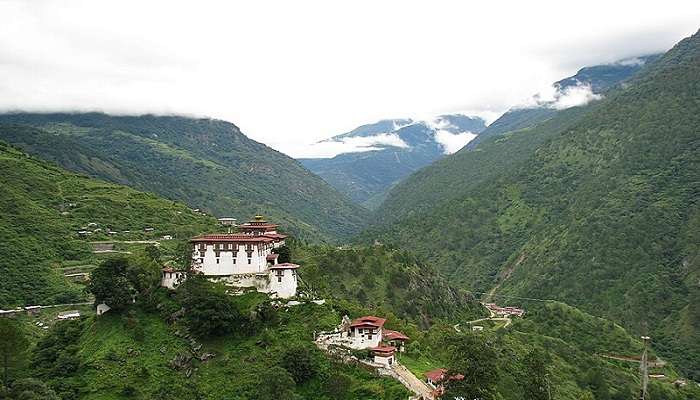
Bhutan, also known as the Land of the Thunder Dragon, renowned for its captivating scenery and rich cultural tapestry, is a kingdom nestled in the Eastern Himalayas.
Among its many architectural marvels stand the dzongs; massive fortresses serving as religious and administrative centres for centuries are cornerstones of Bhutanese history. One such is Lhuentse Dzong, standing as a majestic sentinel overlooking the Kuri Chhu valley, which has witnessed battles capturing the essence of Bhutan’s glorious past and the ebb and flow of Bhutanese life. Embark on a journey through time, where ancient traditions intertwine with breathtaking beauty at Lhuentse Dzong!
Lhuentse Dzong History
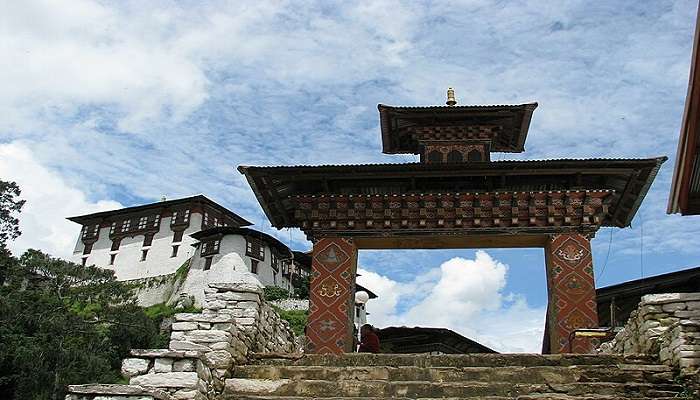
Lhuentse Dzong’s history is fascinatingly duality. While some historians say that the monastery was established initially by Pema Lingpa’s son Kuenga Wanpo in 1543, others trace its roots to a 16th-century temple or a meditation centre built by revered figure Ngagi Wangchuk.
Later, in 1654, the Penlop of Trongsa (Governor), Chogyal Minjur Tempa, transformed it into a powerful dzong after winning a battle and named it Lhuentse Rinchentse. This dzong has played a crucial role in Bhutan’s unification under the leadership of Shabdrung Ngawang Namgyal. Throughout its centuries, Lhuentse Dzong witnessed battles, served as an administrative centre, and remained a vital spiritual sanctuary. Today, it is a testament to Bhutan’s rich past, where power and spirituality coexist.
Must Read: Chimi Lhakhang
Lhuentse Dzong Architecture
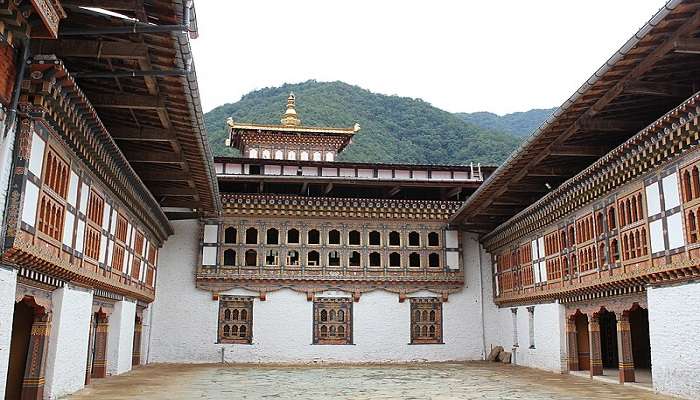
Lhuentse Dzong consists of five temples. Three of them are in the central tower, dedicated to Padmasambhava, also known as Guru Rinpoche, a tantric Buddhist master. The dzong also contains a Gonkhang, dedicated to Mahakala, and a temple dedicated to Amitabha Buddha. There is a temple on the ground floor dedicated to Avalokitesvara. The Kunre, the assembly hall for the monks, is located on the upper floor. Currently, around 100 monks reside in Kunre.
The building has undergone many renovations and restorations, the most important one being carried out when the Assam earthquakes hit it in 2009. Post-renovations, the dzong has restored its glory to the fullest and was inaugurated by His Majesty the King’s Representative, His Royal Highness Gyaltshab Jigme Dorji Wangchuck, on 12 April 2014.
Lhuentse Dzong Places To Visit
A visit to Lhuentse Dzong, Bhutan, is incomplete without visiting the nearby places of interest. In this section, we will examine some of the noteworthy attractions.
1. Bumdeling Wildlife Sanctuary
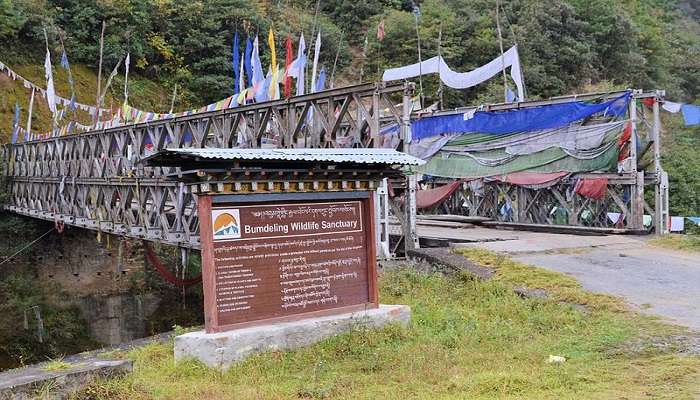
Encompassing over 1500 sq km, Bhutan’s Bumdeling Wildlife Sanctuary, established in 1998, is a haven for nature enthusiasts. This wildlife sanctuary boasts diverse landscapes, from soaring Himalayan peaks to alpine lakes and is home to endangered species like the majestic snow leopard and the elusive red panda. Identified as an Important Bird Area by Birdlife International, it shelters the striking, black-necked crane. The sanctuary also protects a vibrant tapestry of flora, including rare orchids and ancient rhododendron forests. And Ludlow’s Bhutan Swallowtail, the only endemic butterfly in the world, lives here. Explore and enjoy the raw and pristine wilderness of Bhutan’s breathtaking biodiversity to connect to nature.
Distance from Lhuentse Dzong: 186 km approx.
Best Time to Visit: March to August
Operating hours: 9.00 am – 5.00 pm (Monday to Friday)
Suggested Read: Chelela Pass
2. Khoma Village
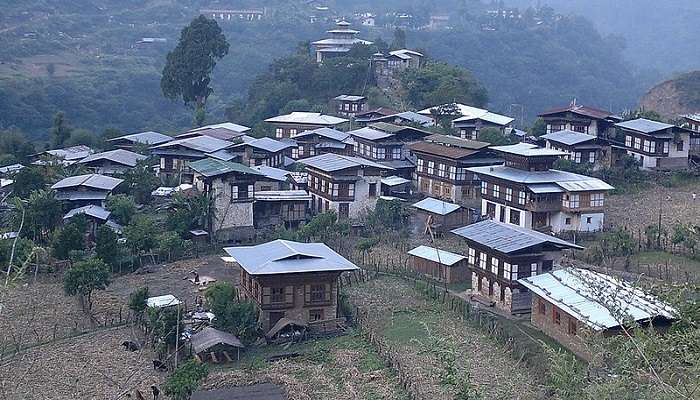
Nestled amidst the lush green rolling hills, a two-hour hike from Lhuentse Dzong lies Khoma village at the confluence of two rivers – Khoma Chhu and Yongla Chhu. This village is renowned for its centuries-old tradition of weaving Kishuthara, a vibrantly coloured silk textile. Wandering through Khoma, you’ll find women skilfully working on the looms and their fingers swiftly moving across, creating intricately beautiful patterns. Support the artisans by buying authentic Kishuthara directly from the artisans. Apart from the bright and beautiful woven textiles, traditional houses and breathtaking panoramic views, Khoma also offers a glimpse into rural Bhutanese life.
Distance from Lhuentse Dzong: 10 km approx.
Best Time to Visit: March to May
Operating hours: None
3. Chorten Kora

Chorten Kora, at an altitude of 1750 m, was built over 12 years around 1740 by Lama Ngawang Loday after a demon was subdued. Modelled after the Boudhanath Stupa in Nepal, the pinnacle was initially carved from a huge stone. Locals believe that an 8-year Dakini girl was sealed alive of her own free will in the chorten as an offering from the Dakpa people of Tawang, Arunachal Pradesh. Dakpas come for circumambulation on the 15th day of the 1st month of their traditional or lunar calendar, and the Bhutanese celebrate their Kora on the 30th of the 1st Bhutanese month.
Distance from Lhuentse Dzong: 185 km approx.
Best Time to Visit: February to March for the Chorten Kora festival
Operating hours: 9.00 am to 5.00 pm
Suggested Read: Sakteng Wildlife Sanctuary
4. Autsho Suspension Bridge

High above the Kuri Chhu River, Bhutan swings the pedestrian Autsho Suspension Bridge. Crafted from steel cables and wooden planks, this bridge offers a thrilling experience for those who dare to cross. No one exactly knows the origins of the bridge, but some believe it’s a relatively recent structure, while others whisper tales of its presence for generations. Enjoy the thrill while walking across the wobbly bridge, the gentle sway beneath your feet, and locals busily crossing your path. Admire the pristine turquoise waters rushing when you gently peek down and soak in the captivating scenery of the verdant rolling hills.
Distance from Lhuentse Dzong: 49 km approx.
Best Time to Visit: March to August
Operating hours: None
How To Reach Lhuentse Dzong
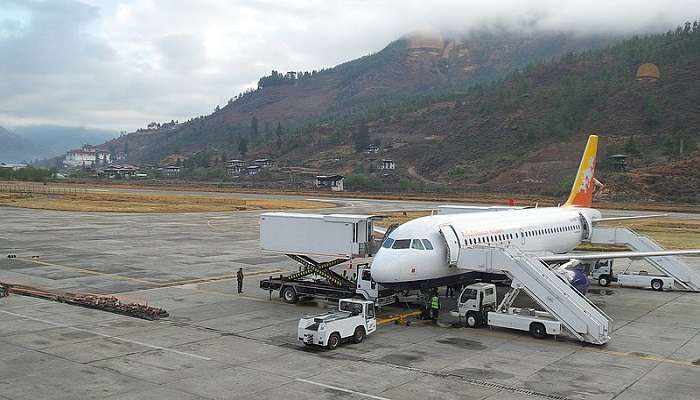
Bhutan enjoys decent air connectivity with a few Asian countries. Its Paro International Airport is well-connected with India, Bangladesh, Nepal, and Thailand. Lhuentse Dzong is located around 560 km from Paro International Airport, Bhutan. You can easily reach Lhuentse Dzong from the airport using these modes of travel.
The fastest way to reach Lhuentse Dzong is to fly to the domestic airport in Bathpalathang (BUT) in Bhutan and grab a taxi to the Dzong, which is around 310 km away. Alternatively, take a cab from Paro International Airport and directly reach Lhuentse Dzong via road, which takes around 9 hours.
Further Read: Paragliding In Bhutan
Lhuentse Dzong has become a symbol of Bhutan’s history. It uniquely combines a fortress’s power with a monastery’s serenity. The architecture speaks for itself regarding traditions that reflect a deep connection between Bhutan’s spiritual and cultural heritage. Come and travel back in time as you explore Lhuentse Dzong and experience the essence of Bhutan’s unique identity. Whether you are engaged by elaborate artwork, enchanted by vibrant festivals, or simply searching for peace amidst breathtaking scenery, Lhuentse Dzong offers a memorable encounter with the magic of Bhutan. So, without further ado, plan your trip to Bhutan if this guide interests you!
For our editorial codes of conduct and copyright disclaimer, please click here.
Cover Image Credit: muddum27 for Wikimedia Common
Frequently Asked Questions About Lhuentse Dzong
When is the best time to visit Bhutan?
Spring (March to May) and autumn (September to November) are the best times to visit Bhutan. However, summer and winter have their own charms and attractions.
Is photography allowed at Lhuentse Dzong?
Do ask permission or please check with your guide if photography /filming in Dzongs, monasteries, temples or other religious institutions.
Is there any dress code while visiting dzongs or monasteries?
Modest dress code is recommended. Clothing which covers arms and legs is a must.
What are a few travel tips for travellers?
Plan the day early. There’s no such thing as night life in Bhutan. Carry cash as not many ATMs are functional.
What are the activities to do in Bumdeling Wildlife Sanctuary?
Trekking, wildlife photography, birdwatching and camping are possible in the National Park.
People Also Read:
Bhutan In November Bhutan In August Bhutan In April

Innovative Content Writer Focused on Producing High quality, Original Content that drives traffic and engages readers. Experienced in Content strategy and analytics to measure content performance using tools such as SQL, Power BI, Excel.











